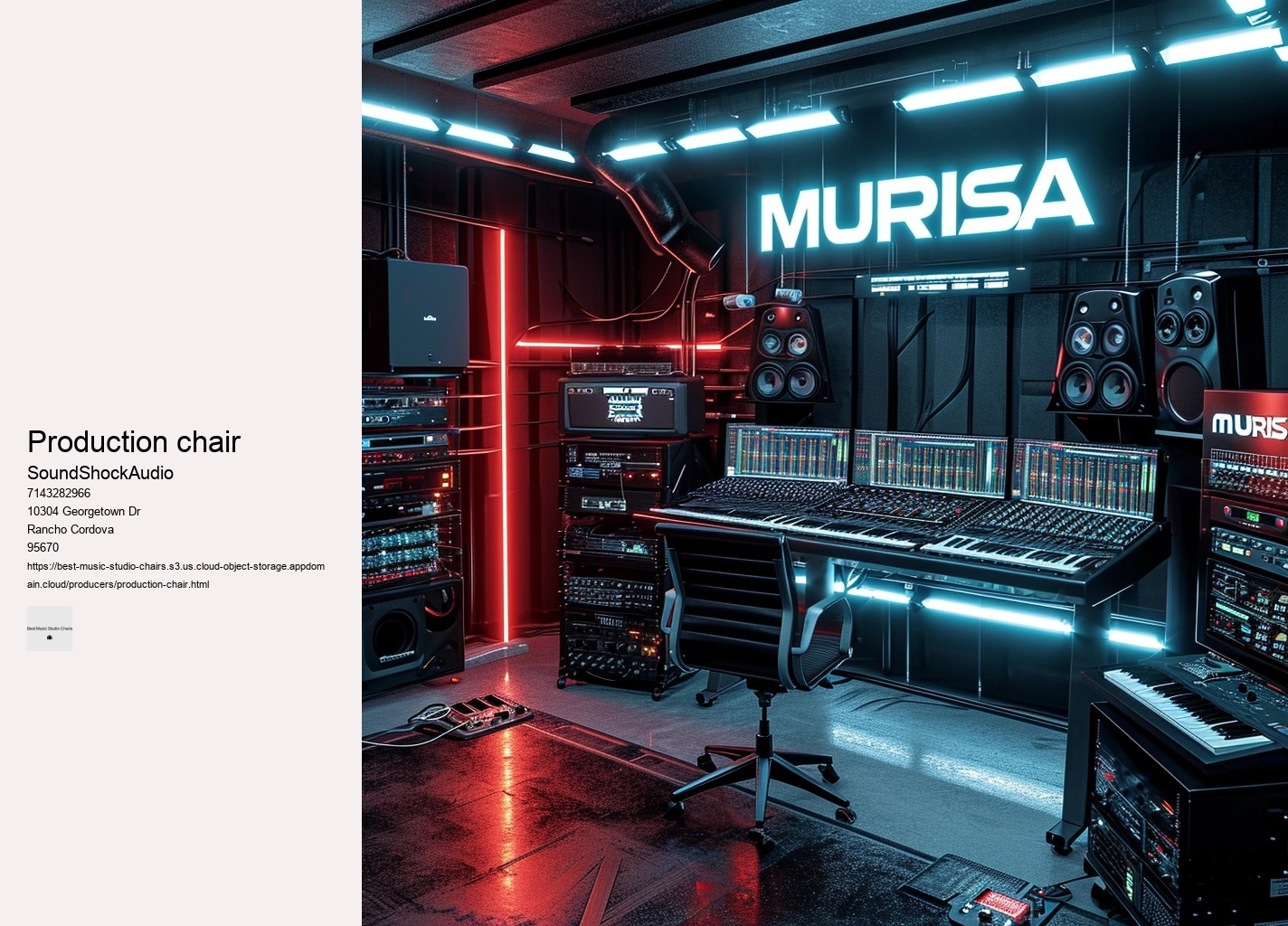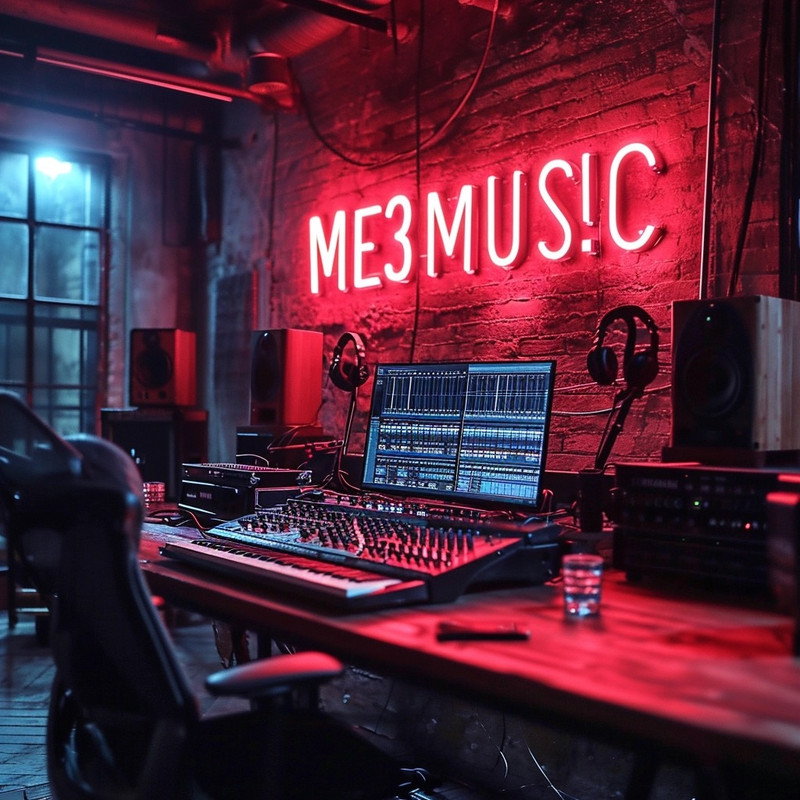

Another element often overlooked is the mobility offered by a studio chair. Music production often involves dynamic body movements—reaching for that high note on a keyboard or pivoting swiftly from one piece of gear to another—and your chair must withstand constant use without losing its form or function. Moreover, time equals money in any production environment - be it music, video editing, or graphic design - and efficiency is king.
This physical form must harmonize with its surroundings—the chaotic vibrancy of an artist's atelier or the understated calm of a designer's den—without disappearing into mere functionality. Balance cost against features; investing in a quality chair can save you from future back concertos (the painful kind) down the road.
Ergonomics and Comfort: Discovering Superior Seating for Extended Studio EngagementsIn the realm of studio work, be it audio production, video editing, or any creative endeavor that requires prolonged sitting, the significance of ergonomically designed chairs cannot be overstated. Whichever camp you fall into, remember that breathability remains essential; materials like mesh allow air circulation which prevents overheating during marathon sessions. Choose a chair with adjustable features—think lumbar support that defies gravity or armrests that refuse conformity—allowing you to orchestrate your ideal sitting posture.
Seat depth is another critical factor often overlooked in the pursuit of comfort. Fabrics that breathe are essential; they allow air circulation, wicking away perspiration and keeping you cool under pressure.
It's less about grandeur or aesthetics and more about ergonomics and personal well-being. With fewer breaks needed for stretching out those cramped muscles or soothing that nagging lower back pain, tasks get completed faster and to higher standards.
In conclusion, acknowledging the profound impact that proper seating has on preventing fatigue and injury is paramount for maintaining overall well-being. Their chairs are silent partners in this symphony of skill, providing a foundation upon which their artistry can flourish. These adjustments allow you to maintain a healthy posture, reducing strain on your back, neck, and shoulders.
This will create a quirky and unusual text that maintains the essence of the topic but with a twist.---When we delve into the realm of studio furniture, particularly chairs designed for music producers, durability stands as a paramount attribute.


Unveiling this paragon of comfort, we encounter a masterpiece that seamlessly integrates aesthetic appeal with practical features. Materials play a significant role in this balancing act. Enter dynamic ergonomics: this innovative concept refers to chairs that adapt in real-time to the user's body. Ultimately, the choice between economy versus luxury comes down to balancing short-term savings against potential long-term gains in healthful ease and professional output. The chair you select for endless hours in the studio is not merely a seat; it becomes your command center, a throne from which you orchestrate audio masterpieces.
This evolution symbolizes a broader shift towards recognizing the importance of human-centric design—not merely as an afterthought but as a fundamental consideration shaping how tools enhance our abilities rather than impose limitations upon them. Once upon a twilight hue, artisans of rhythm embarked on quests for perfect perches. This decision is not merely about comfort; it also encompasses health considerations and productivity implications. This exploration reveals the best studio chairs, ensuring your experience is unmatched in support and ease throughout editing or any task requiring prolonged sitting.
Firstly, ergonomics play a pivotal role. This increases efficiency as you reach for different pieces of equipment or instruments during your session. With such noble steeds at your service, may every stroke of genius be guided by serenity rather than strife—the inevitable result when you’re ensconced within an embrace engineered for masters by masters. Chairs without this fundamental adjustment could lead to discomfort and health issues over time.
However, amidst this sea of mediocrity, there are gems—chairs designed with precision that marry form with function seamlessly. However, incorporating this functionality without compromising on style requires an innovative approach—melding practicality with elegance. Its innovative backrest aligns seamlessly with the spine's natural curve, promoting an upright position without strain. Yet delve deeper into its design elements, and you'll find that each curve, texture, and material choice speaks volumes about the ethos it carries.
When embarking on this journey, comfort reigns supreme. When hours stretch into marathons of focused work, a reliable studio chair is not merely furniture; it transforms into a steadfast companion. Therefore, it becomes imperative for musicians to find seating that resonates with their body's needs as much as they resonate with their music.
In conclusion, while there might not be a universally acclaimed 'top-rated' chair due to individual preferences and needs varying greatly amongst musicians, chairs that prioritize ergonomics and posture like the Harmony ErgoTune Supreme are highly regarded in musical circles. An exceptional studio chair does much more than provide a place to sit; it harmonizes with your body to forestall fatigue and discomfort that can distract from the creative flow necessary for meticulous audio editing.
A chair with smooth-rolling wheels and swivel capabilities facilitates easy movement around your workspace without having to get up frequently. These less probable options highlight by contrast what makes certain choices superior when selecting an optimal studio chair.
Creating a comfortable and ergonomic workspace is crucial for up-and-coming musicians who spend countless hours practicing and recording. Being able to adjust these elements ensures that your body maintains an optimal posture throughout your session.

Prioritizing ergonomics and comfort ensures that you can endure those marathon sessions without sacrificing your physical or mental well-being — allowing creativity to flow unhindered by bodily distractions. This position reduces pressure on the lower back and aids circulation. Moreover, taking short but frequent breaks from sitting can help reset one’s posture and reduce the likelihood of fatigue.
Top-tier studio chairs are engineered utilizing robust materials such as reinforced aluminum frames and resilient mesh or leather upholstery. Consider also mobility; a chair with smooth-rolling casters will let you glide effortlessly from one end of your workspace to another—a tangible metaphor for seamless thought transitions from concept to execution.
Fourthly, durability is crucial since studio chairs are used extensively. Ultimately, aesthetics hold peculiar significance; after all, this chair sits at the heart of creativity's temple—the studio—and its design must inspire.
However, practicality reigns supreme in reality. When discomfort is absent from our seating experience, we can immerse ourselves fully in creative tasks without distraction — an invaluable benefit for anyone dedicated to their craft.
The silhouette of a studio chair also communicates much about its character: whether it's minimalist lines that echo modernist sensibilities or more ornate structures that nod to classical influences. This means no more fidgeting to find a comfortable position or standing up every half hour to shake off stiffness. Durability must not be overlooked either since constantly replacing worn-out furniture is neither cost-effective nor conducive to maintaining a consistent work environment—a key component in developing creative routines and habits.
When contemplating the acquisition of a chair for music production pursuits, individuals are often confronted with a dichotomy: should one opt for budget-friendly seating solutions or invest in high-end furniture? Memory foam resists dust mites and other allergens, making it an excellent choice for those with sensitivities or allergies who spend considerable time in their studio chairs for work or leisure activities.
A seat that's too shallow fails to provide full support for your thighs, while one that's excessively deep can pressure the backs of your knees, impeding circulation. They achieve this through several mechanisms such as self-adjusting lumbar supports, articulated backrests, and responsive seat pans.
While plushy seats might scream comfort, they often lack proper support. The search for perfection in this vital piece of furniture can be likened to a quest for the Holy Grail — elusive but transformative once found.
Instead of chairs for musical chairs, you can use floor markers, such as colored tape or paper plates, to designate spots where players must stop. Alternatively, you could use cushions or pillows for a softer option that players must sit on when the music stops. These alternatives can make the game more versatile and adaptable to different playing environments.
The Herman Miller Aeron chair is popular due to its innovative design that prioritizes ergonomics, comfort, and durability. It features adjustable settings to fit a wide range of body types and work styles, making it a versatile choice for both office and home environments. Additionally, its sleek, modern aesthetic and the use of high-quality, sustainable materials have made it a status symbol in the world of office furniture. The Aeron's reputation for improving posture and productivity further contributes to its widespread acclaim.
Yes, people still listen to EDM (Electronic Dance Music). It remains a popular genre worldwide, especially among younger audiences and in club scenes. Major music festivals around the globe, such as Tomorrowland and Ultra Music Festival, continue to attract large crowds, showcasing the enduring appeal of EDM. Additionally, streaming platforms and social media have made it easier for fans to access and discover new EDM tracks and artists.
The cost of a decent office chair can vary widely depending on factors such as ergonomics, materials, brand, and features. Generally, a good quality office chair can range from $100 to $500. However, for chairs with advanced ergonomic features, premium materials, or designer brands, prices can go significantly higher, even exceeding $1000. It's important to balance budget with the need for comfort, especially if you'll be using it for long hours.
Mesh chairs are often considered better because they offer improved ventilation, helping to keep the user cool and comfortable over long periods of sitting. Additionally, mesh material typically provides a good balance of support and flexibility, adapting to the user's body shape for enhanced ergonomic benefits. This combination of breathability, support, and durability makes mesh chairs a popular choice for office environments and home offices alike.